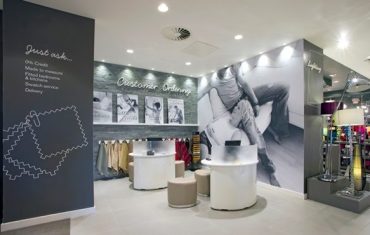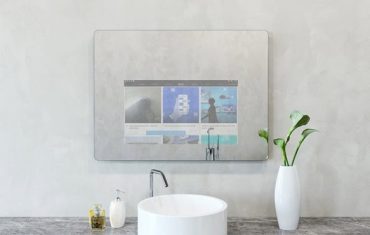Why do some people become loyal customers of a brand while others drop off after the first purchase or even earlier? Marketers have been trying to answer this question for decades, and it hasn’t gotten any easier. Given the many factors that make up a customer’s experience, determining the exact cause of loyalty is challenging to say the least—especially as customers are experiencing your brand in more places and ways than ever before.
Our smart devices are never far away. We’ve grown accustomed to being able to browse our favourite website, shop for a last-minute gift or summon a cab from anywhere on any device. Our increasingly connected world has also seen shifts in the e-commerce landscape with the erosion of barriers to cross-country commerce. A majority of Australian consumers (71 per cent) are particularly drawn to cross-country shopping, much more so than in the UK (44 per cent) and the US (42 per cent).
Because of this convenience and immense selection, consumers now expect more from retailers. If your user experience hasn’t changed since the days of single-touch interactions, you’re missing out on a new generation of consumers that prefer to interact with brands across channels. They may browse a product online, view it in-store, cart it on one device and purchase it on another. In the eyes of the consumer, this all combines to create one singular experience that helps determine whether they’ll do business with a brand—and whether they’ll keep coming back.
The consumer experience encapsulates every interaction, including your website, email, social media, customer service policies and availability, bricks-and-mortar, mobile app and what happens post-purchase.
When customers subscribe to your email list they expect more than generic messaging. They expect emails to be helpful, especially if they take the extra time give you additional information.
Your welcome series should introduce your brand, engage the subscriber and build consumer confidence. Find ways to differentiate the messaging and personalise it with intelligent workflows that are tied to the customer’s unique behaviour, such as the source of the sign-up and/or click activity within emails themselves. Did the sign-up occur on the health food page or the chocolate page? Did the customer click on specific links in the email? These user actions should dictate the types of emails the subscriber receives.
For promotional and other lifecycle messages, continue to provide relevance at every turn. Incorporating dynamic product recommendations in your email messaging is an excellent way to set your communications apart from the typical batch-and-blast fare. Are your cart and browse abandonment emails providing relevant content to the individual shopper? You’ll want to differentiate messaging by analysing price points or even specific SKUs.
Online experience
Does your online experience draw consumers further down the funnel or push them away? Site loading speed, mobile navigation, integration of customer reviews and site search can all impact your users’ online experience. Pay attention to the product recommendations on your site. Are they tailored to the individual customer by taking in data from other sources, such as email activity, purchase and browse history? If your site offers nothing to guide the user, it’s the equivalent of a sommelier who hasn’t tried anything on the wine list. If you can’t guide them, you can’t be helpful.
Social media
With consumers spending so much of their leisure time on social media, this channel can be a great way to connect with your audience. However, customers have gotten very good at tuning out inauthentic attempts at conversation online. What value do your social platforms provide for followers? Are you proactively engaging and communicating with your customers, or are you strictly reactionary? If you’re not actively engaging your audience and encouraging them to share with you—and using those interactions to better customise your emails and web experiences—you’re missing a huge opportunity to foster loyalty.
Customer service value-adds
Thanks to e-commerce giants like Amazon, free shipping and returns are no longer unique value-adds—they’re the expectation. How does your business compare to your competitors in terms of customer service? Do you offer live chat, 24/7 help, resource videos or other tools to assist and guide customers? Calling your own customer service to ask questions is a great way to tell just how effective this avenue is from a customer’s perspective. Looking for differentiators is the key in determining whether you can meet your customers’ needs and provide them with the level of service they expect.
Bricks-and-mortar
It almost goes without saying, but a focus on the in-store experience is essential for any omnichannel retailer. Look for ways to bring the ease and convenience of online shopping to the in-store experience. Just as your digital communications guide customers online, your staff should be well-trained to assist and guide shoppers in person. Arranging home delivery for an out-of-stock product should be a painless experience. Use technology to enhance the shopping experience, whether it be with virtual dressing rooms or associates equipped with mobile devices.
What happens post-purchase
What happens post-purchase can have a significant effect on customer loyalty. How do consumers move through the purchase process, and how does that stack up against the competition? Make a purchase through your own site and from your competition. How do they compare? Notice how seemingly small things like nice packaging or a friendly note can add a smile to your day and make you more inclined to do business with the company in the future.
Perhaps the key to customer loyalty isn’t so mysterious after all: when you make customers feel good about buying from you, they’re more likely to do so in the future. Making your consumer experience more relevant, frictionless and engaging is one of the best ways to earn their trust and meet the demands of this increasingly connected world.
Shannon Ingrey is the general manager of Oracle + Bronto APAC.







